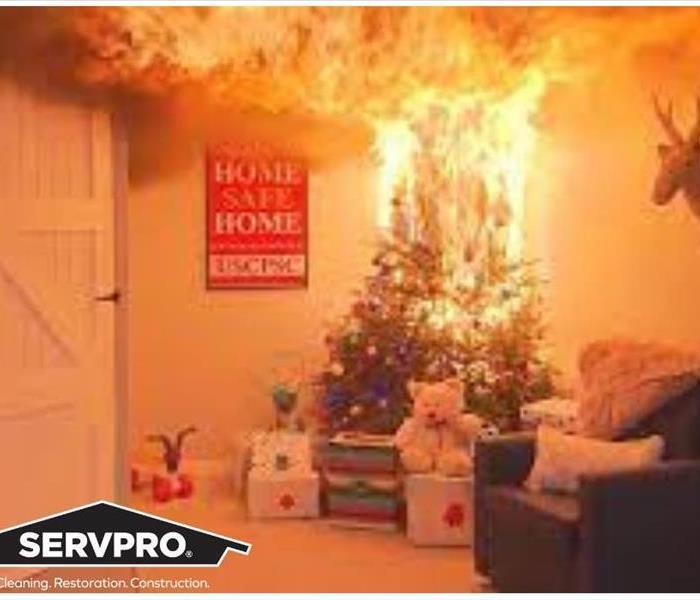Christmas Tree Safety Tips
12/5/2022 (Permalink)
Safety Tips
Use of lights that produce low heat, such as miniature lights, will reduce drying of the tree.
Always inspect light sets prior to placing them on the tree. If worn, replace with a new set.
Do not overload electrical circuits.
Always turn off the lights when leaving the house or when going to bed.
Monitor the tree for freshness. After Christmas or if the tree is dry, remove it from the house.
Find a recycling program near you.
Never burn any part of a Christmas Tree in a wood stove or fireplace.
Provided by the National Christmas Tree Association: It's that time of year again. We'll all probably see the local TV news team do a Christmas Tree fire story. It'll show a dramatic image of a tree burning and the reporter will say with consternation, "If you get a Real Christmas Tree, this could happen to you….blah blah blah.”
Watching those stories every year, I can only wonder at the ethical standards of the TV station. This is clearly an example of sensational and misleading journalism. While I applaud efforts to teach people how to properly care for their farm-grown Christmas Tree and warn people about potential fire hazards, journalists have a responsibility to get the facts right.
A natural tree, especially a tree that is kept watered, is extremely difficult to ignite from an accidental ignition source found in a home. In fact, newspapers, magazines, boxes, bags and drapes are far more likely to be involved in a fire, but mentioning these before natural trees would still “miss the mark.” Media focus should be on the source of the fire in the first place. Educating the public about unattended or poorly placed candles, overloaded circuits and faulty wiring should be your priority. A cut Christmas Tree has NEVER, ever, ever in history CAUSED a fire. Fires are caused by sparks, flames, heat or chemical reactions. A plant (which is what a Christmas Tree is) can NOT cause a fire.
According to published reports of the National Fire Protection Association, a confirmed average of 111 fires per year in the U.S. were ones in which a cut tree was the first item ignited in a residential fire. During the same period of the report, an average of 28 million cut Christmas Trees were displayed. Divide 111 by 28 million. You get 0.0000039. Or 0.0004% rounded up. But watching local news reports on the topic, one would think it happened all the time.
Another item in the NFPA report you might find interesting is that fire officials state clearly that artificial trees also catch on fire every year. There is no testing lab or standards for those products to meet in order to print the words "flame retardant" on their packaging. They're really just words on a box. Fake trees catch on fire every year. Not very many, just like farm-grown trees. However, according to the NFPA report, 28% confirmed residential fires where a Christmas tree was the first item ignited involved a fake tree.
I hope these journalists realize just how erroneous and misleading and dramatized their stories like this are, and how scaring people with dramatic images of trees burning doesn't help to constructively provide tree care tips. It only hurts local farmers who grow the trees. Media stories that exaggerate the danger of a consumer item – or worse yet media stories that intentionally fake an event such as pouring gasoline over a Real Christmas Tree to demonstrate its flammability – can influence consumer behavior in a way that is unfair and unfortunate. It is journalistic sensationalism and does a disservice to the public and the product. Don't think they fake it? Just a few years ago, on The Tonight Show, Jay Leno showed a clip of a fireman pouring four gallons of gas on a tree just prior to doing one of those "this could happen to you" Christmas Tree fire stories for local TV news.
My hope is that consumers are not fooled by media who show these news reports. You can get the facts, including proper tree care practices, at www.realchristmastrees.org Have a safe and Merry Christmas!






 24/7 Emergency Service
24/7 Emergency Service
